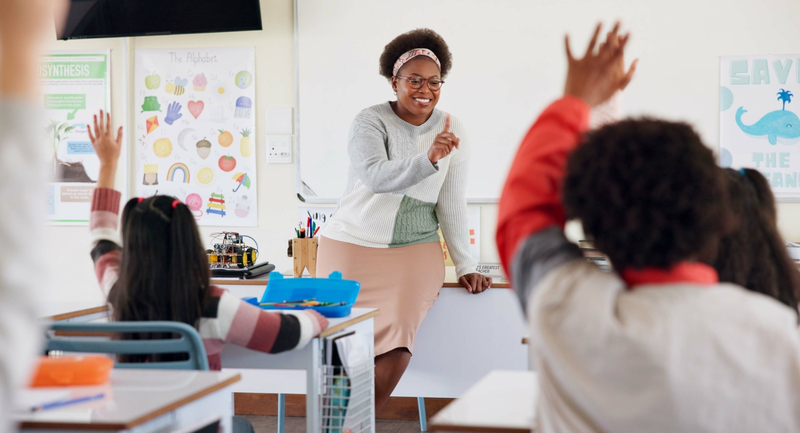Lisa Westman’s actionable steps to an empathetic classroom environment can keep you going, even in the hard times.
It was pandemonium. I lost control. Amid the chaos, one student, no older than six, walked to the marble jar the classroom teacher used for rewarding good behavior, opened it, and scattered three months of collective behavior tracking across the floor. The other students gasped, seeing their progress rolling around their feet, but continued to cause mayhem unabated. I felt my face turning red with shame. I tried yelling but the damage had been done. Even as a substitute, I’d failed these students—it was all my fault. It was my responsibility to take charge of the classroom in the absence of their teacher. Instead, I’d let the space become unsafe.
So, what went wrong? And how did I keep this experience from pushing me out the door, never wanting to sub in another classroom again? As educators, we’ve all had at least one or two moments that have pushed us to the limit. But empathy, as I've since learned, can soften the blow of the setbacks we experience in our daily practice.
Lisa Westman, author of the new ASCD book Teaching with Empathy: How to Transform Your Practice by Understanding Your Learners, reflects on these all-too-common moments and the shame educators can carry as a result. “Regrettably,” she writes, “shame is inflicted on us and by us more frequently than most of us realize—a behavior I hope this book will help recognize and curb.”
It’s a dangerous habit to fall into. Shame is a one-way ticket to trauma, and trauma will push any teacher out of the profession.
“The first step,” Westman writes in the introduction about overcoming shame and trauma, “while it may sound quite simplistic, is just recognizing that we are all human.”
As the book makes clear, learning to have empathy for ourselves and others is a process. Empathy isn't intuitive. Building genuine empathy—like any muscle—takes repetition and practice.
Take Westman’s assessment below to test your knowledge about empathy.
*Find the answers to the Empathy Assessment on page 12 of Westman’s book.
Once you’ve unpacked what empathy really is and how it works, take the time to determine where you fall on the continuum. What role does empathy play in your teaching practice? How many of the following statements ring true for you?
Don't fret over your score—this exercise is about examining, reflecting, putting new ideas into practice, and seeing growth. For this reason, Westman invites readers to fill out the checklist and Empathy Assessment before reading the book and after.
Growing Empathy
It wasn’t until I read Westman’s book and truly reflected on empathy that I realized what went wrong on that fateful day. Normally, my routine worked to perfection: I’d travel to each grade, tug my borrowed Spanish cart up to the whiteboard, and say, “Hola, me llamo profe Bachelet.”
I’d relish in the students’ quizzical glances and puzzled expressions—a sign that they were ready for learning, ready for my stage.
“Soy el substituto,” I’d say. That would intrigue them (it was not typical for their substitute to speak Spanish to them so soon). “Todos arriba,” I’d add.
After gesticulating wildly with my arms to get up, they’d understand or emulate those who understood. There was a magic happening here. The anticipation for a simple game of Simon Says captivated them and held their attention.
But on Rolling Marble Day, none of this happened. In fact, I’d failed to recognize something important about the 1st grade classroom I’d been assigned to that day. They were not in the right headspace to learn, and I didn’t put myself in their shoes.
Forcing Simon Says on that group, at that time, and speaking a different language than them so early in the year, wasn't the right move. While I don’t blame myself for trying, I do look back and think about what would have happened had I read the situation better, read that this was the last period before lunch, read that some kids in the room found my actions triggering.
Forcing young students, who were clearly unready, to follow my preplanned agenda became disastrous. I could have taken the time to make eye contact, examine facial expressions, acknowledge their need to eat, and allow for them to be heard (without judgement). Had I done so, perhaps I wouldn’t have lost control of the class that day. A little empathy could have gone a long way.
But I also didn’t let that one event define me as an educator. I continued teaching with a new goal—to let empathy guide my decision making. As Westman emphasizes: Shame begets shame; empathy begets empathy.
If you would like to learn more about teaching with empathy, check out Lisa Westman’s book. You won’t regret it.








